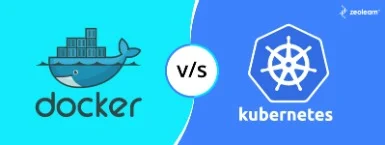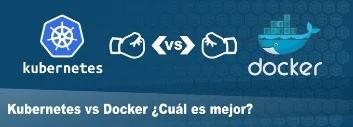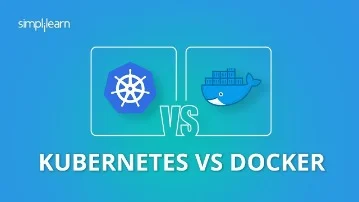Kubernetes Vs Docker Vs Openshift
Content
- Automation Of Deployments
- Docker Without Kubernetes
- I Kubernetes Vs Docker
- Although Many People Want To Compare Kubernetes And Docker, It’s Not Actually An Either
The control plane is where developers can review their deployments, storage, configurations and schedules. Developers can also review active containers to get the current state of the application. Kubernetes was often compared to Docker Swarm, but Docker Swarm Enterprise was purchased and quietly phased out for the more dominant Kubernetes technology. Kubernetes is the market leader in orchestration in a containerized environment, and every major cloud platform supports it. You can also run Kubernetes on-premise if you host any application servers in-house. We hope this post gave you a sense of the key differences between Kubernetes and Docker Swarm.
Kubernetes and Docker are complementary, the two can work together, but neither absolutely requires the other. Docker remains a very popular tool for creating containers, while Kubernetes has become the most popular tool for container orchestration in production. It also runs hassle-free on many platforms, including Kubernetes and OpenShift. Docker Swarm allows you to do integrated cluster management within Docker.
With Kubernetes you can manage your containerized application more efficiently. Docker Swarm container networking greatly simplifies service discovery. All containers join the cluster-wide ingress network overlay at deployment. It allows containers to communicate through virtual private IP addresses and service names regardless of the underlying hosts. Kubernetes permits much of the load balancing concept when container pods are defined as services. Each service is accessible through a certain set of pods and policies which allow the setup of load balancer pods that can reach the service without worrying about IP addresses. Originally Docker Swarm did not provide much in the sense of container automation, but with the update to Docker Engine 1.12, container orchestration is now built into its core with first party support.
- However, as an application gets more complicated, the operational burden of managing containers becomes a real problem.
- Helm charts enable you to use custom hooks and in-place upgrades, simplify rollbacks to older release versions, and support simple sharing.
- Either way, Ridge can help you deploy and optimize cloud-native applications.
- Besides Windows 10, Docker is compatible with Windows Server 1709 and 2016.
- Cloud Gain insights into AWS, Microsoft Azure, and GCP cloud resources.
Even when developing on top of Node.js technology, for example, developers prefer building their Docker images on top of Node’s official Docker image. Similarly, Docker Inc., the company behind Docker, offers its own container orchestration engine, Docker Swarm.
Automation Of Deployments
This is essentially a standard way of communicating between Kubernetes and the container runtime, and any runtime that supports this standard automatically works with Kubernetes. You will still be able to use Docker in other ways that are relevant to Kubernetes , but you will not be able to use Docker as the container runtime underneath Kubernetes. You may be wondering why you’d have to choose just one when both can work well together? Docker promises to execute the code as containers, while Kubernetes provides a way to manage these containers at a single place. Kubernetes can help you with load-balancing, app scaling, etc. across all the nodes—nodes that run containers inside them. It is specially designed to manage container platforms like Docker, containerd, etc. A container is like a compact box holding an application’s dependencies all in one place.

This serves as an advantage to Docker Swarm users, as transitioning from Docker to Docker Swarm can be easier. Thus, the Kubernetes vs Docker comparison is not as simple as creating a pros and cons or feature-by-feature list. However, there exists an orchestration technology similar to Kubernetes developed by Docker Inc. called Docker Swarm, which allows us to make a more fair comparison. Docker is an open-source containerization platform launched by the company Docker Inc. in 2013. It enables you to segment your application from its infrastructure and deploy it quickly on a cloud-premise . To master Kubernetes, teams have to understand containers and container orchestration.
Docker Without Kubernetes
In reality, they are not directly comparable, have different roots, and solve for different things. A pod is made up of one or more containers, but most commonly just a single container. When defining your cluster, limits are set for pods which define what resources, CPU and memory, they need to run. The scheduler uses this definition to decide on which nodes to place the pods.
Applications packaged with Docker will continue to run — no change there. Thus, you can still build and test containers with the tools you know and love. You don’t need to change your CI/CD pipelines or switch to other image registries, Docker-produced images will continue to work in your cluster just as they always have. It shouldn’t be surprising, as it brought the concept of containers into the mainstream, which in turn inspired the creation of platforms like Kubernetes.
I Kubernetes Vs Docker
It also provides a way to control costs for those that have static resources in the cloud. This combination of control and consistency is one factor that makes Docker attractive. The ability to move towards Infrastructure as Code is also greatly advanced by the usage of Dockerfiles checked in alongside code. In doing so, the application and everything needed to create the underlying infrastructure is protected and reviewable in the same way other code is managed.
Containers, unlike virtual machines, do not contain an operating system which means that they are capable of creating quickly and they are much quicker to start. In recent years, all major cloud computing providers, including Amazon Web Services and Google Compute Platform , have adopted Docker’s availability and added individual support. With Docker containers businesses can build, share and run applications with flexibility and security.
And new development happens faster becauseengineers only target a single platform instead of a variety of servers and clouds. Docker data volumes are directories shared within one or more containers. Volumes are created separately or together with containers and can be shared between multiple containers.

Like most schedulers, Docker Swarm provides a way to administer a large number of containers spread across clusters of servers. Its filtering and scheduling system enables the selection of optimal nodes in a cluster to deploy containers. Once you have Kubernetes up and running, updates to configuration continues to be a manual process. Opsani can help with software that applies ML algorithms to provide continuous optimization for Kubernetes systems.
Software engineers have taken containers to their logical extreme by providing complete CI/CD solutions involving building and testing Docker images and managing public or private Docker registries. Especially, if you are adopting a microservices-based architecture for your software you should definitely use Docker containers for each microservice. We can have multiple master nodes so that Kubernetes can survive even the failure of a master node. In theory, you can learn about one without having a clue about the other.
IBM, HP, Microsoft, VMware, Google, Red Hat, CoreOS – these are just some of the major vendors racing to make containers as easy as possible for developers to use, to share, to protect, and to scale. Docker Swarm is the native clustering and scheduling tool for Docker. It allows IT, administrators and developers, to establish and manage a cluster of Docker nodes as a single virtual system. It is written in Go and released for the first time in November 2015 by Docker, Inc.
PMBOK is a registered mark of the Project Management Institute, Inc. ITIL®, PRINCE2®, PRINCE2 Agile®, AgileSHIFT® are registered trademarks of AXELOS Limited, used under permission of AXELOS Limited. The Swirl logo™ is a trademark of AXELOS Limited, used under permission of AXELOS Limited. COBIT® is a registered trademark of Information Systems Audit and Control Association® (ISACA®).

Starting now, you may want to start building any new nodes so that they use a non-Docker container runtime as well. Any conventional application will use a database to store user data, a framework to add new features, and a programming language to hold it all together. Now, imagine having to deal with all these dependencies on your system and push the new changes to the main server—every single time.
Currently, it is the most popular tool for creating containers, whether developers use Windows, Linux or MacOS. Organizations use Kubernetes to automate the deployment and management of containerized applications. Rather than individually managing each container in a cluster, a DevOps team can instead tell Kubernetes how to allocate the necessary resources in advance. On the other hand, when we run containerized applications, we virtualize the operating system (your standard libraries, packages, etc.) itself, not the hardware. Now, instead of providing virtual hardware to a VM, you provide a virtual OS to your application.
Kubernetes (often referred to as “k8s”) is an orchestration tool used to deploy containers. If an enterprise uses containers, it’s likely they use Kubernetes to help automate the deployment process. This includes Azure Kubernetes Service , AWS Elastic Container Service for Kubernetes , and Google Kubernetes Engine . The federated application management feature will automate the management and security of container applications on premises and across Kubernetes-based cloud services. It will provide a single management platform to enterprises so that they can centrally control and secure the software supply chain for all the containerized applications. Docker provides the ability to package and run an application in a loosely isolated environment called a container. The unique feature about container is that when you run a container, you know exactly how it will run – it’s very predictable, repeatable and immutable.
It is easy to learn compared to its counterpart and works with the existing CLI. Our Kubernetes manages a cluster that contains a single host, which is our local machine. On a remote cluster, there might be hundreds of nodes that host different deployments.
The short and simple answer is yes, Docker can function without Kubernetes. You see, Docker is a standalone software designed to run containerized applications. Since container creation is part of Docker, you don’t need any separate software for Docker to execute. In fact, if you are starting out on your own in a casual environment, you don’t need an extensive tool like Kubernetes right away.